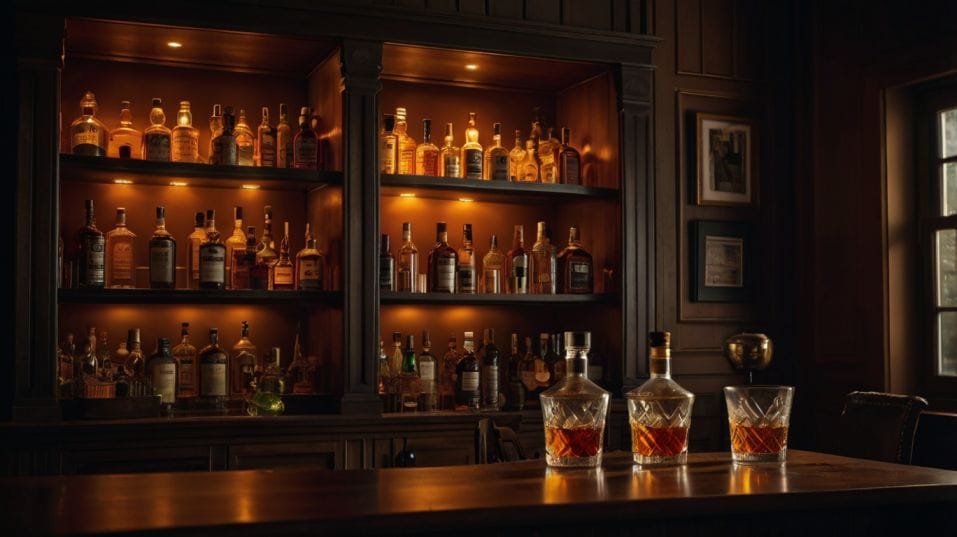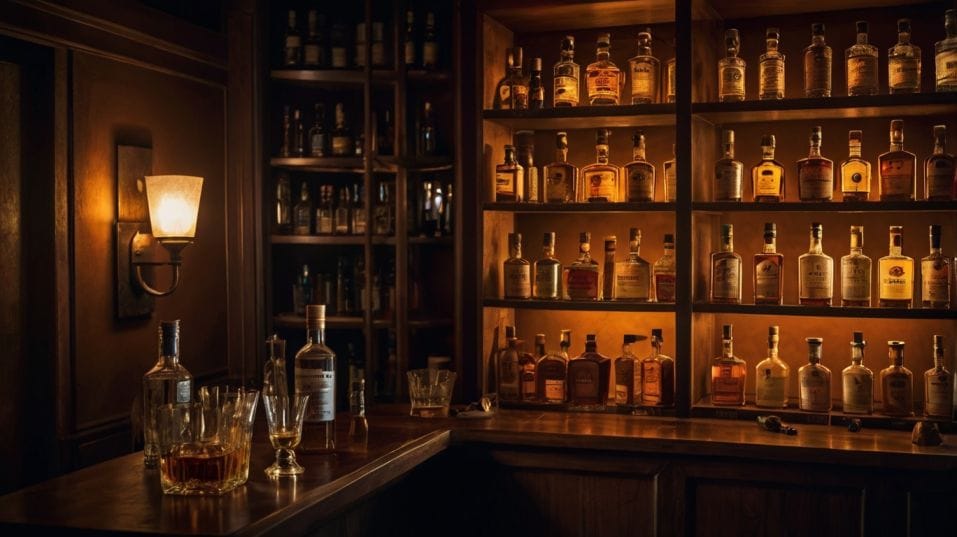How to Organize Your Whiskey Collection
Level up your whiskey game by organizing your collection for flavor, flow, and exploration. Learn how to build a shelf that sharpens your taste.

Ever find yourself staring at your whiskey shelf, not knowing what to pour? That’s your signal—it’s time to organize with purpose.
When you move beyond random rows and start sorting by flavor, layout, and curiosity, your collection becomes more than bottles. It becomes a tool.
The right setup sharpens your palate, tracks your journey, and helps you explore deeper with every sip. Here’s how to turn your shelf into something that actually serves your taste.
Start With Flavor First
The most useful way to organize whiskey isn’t by brand, price, country, or age. It’s by how it tastes.
Flavor-first organizing gets you closer to what matters. You’re training your senses, not just growing a stash. Sort bottles into broad profiles: smoky, spicy, sweet, herbal, fruity, malty, earthy.
You can get more granular over time, but even rough groupings immediately sharpen your awareness. It helps you compare across styles, spot holes in your lineup, and avoid buying the same profile again and again.
Got three sherry-bombs and no highland-style orchard fruit? That tells you something. Lined up this way, your shelf becomes a living flavor map, not just a static collection.
Let it evolve. One bottle might straddle two groups—that’s fine. It’s not about rules. It’s about reflection. You’re not just storing bottles; you’re building a tasting archive.

Let Your Layout Work for You
Where and how you place bottles matters more than you think. A chaotic shelf wastes time and dulls curiosity. A smart layout invites you to taste with intent.
Assign Zones That Reflect Use
Start by assigning zones. Group by flavor profiles, but also consider proof, finish, or usage.
Keep your everyday pours at eye level or front and center—easy to reach, easy to replace. Reserve a lower shelf for high-proof or less frequently opened bottles.
Create a top-tier section for limited editions, experimental picks, or bottles you’re saving for something special—but keep it rotating. Nothing should live on the top shelf forever.
Make Bottles Visible and Reachable
Storing horizontally? Use dividers or boxes to prevent confusion. If you're working with cabinets or crates, consider tiered risers or adjustable racks.
Visibility matters. If you can’t see a bottle, you’ll forget you own it—and it might as well not be there.
Build Flights, Not Just Rows
A serious whiskey collection isn’t just an inventory. It’s a tasting toolkit.
Curate Mini-Experiments
Curating mini-flights is one of the fastest ways to deepen your palate.
Start pairing bottles based on a theme: three single malts from different cask finishes, four bourbons with different mash bills, a trio of world whiskies with unusual grain bases.
These mini-experiments turn drinking into exploration. They force you to slow down, notice differences, and build flavor recall.
Keep an Active Flight in Rotation
Set aside a corner of your shelf—or a tray on your bar cart—for your current flight. This keeps you engaged.
Instead of grabbing a random bottle at the end of the day, you’ll pour with curiosity. That mindset shift is the difference between casual sipping and confident collecting.
Label With Purpose
Don’t rely on memory. After the second pour, that “nutty spice on the finish” you noticed might disappear from your brain. And six months from now, you’ll forget which bottle had the crazy plum note that blew your mind.
Make Notes That Actually Help
The fix? Label intentionally. Neck tags, sticky notes, even wax pencil marks work.
Include details that matter to you—flavor impressions, distillation details, purchase location, or even your mood when you first tasted it. These notes turn your shelf into a personal tasting log.
Go Digital—If It Serves You
Digital trackers are useful too, if you’re consistent. Just make sure the data serves you. Skip barcode scanning or tasting scores from strangers.
Focus on flavor descriptors, comparisons, and personal context. This is about your palate, not points.
Leave Room to Breathe
A good collection has flow. Don’t cram every bottle onto a shelf like you’re stocking a bunker. Collections need space—for tasting, for shifting tastes, and for the occasional dud that teaches you something.
Build In Margin
Build in margin. Have an “on deck” section for bottles you want to open next, a “drink soon” area for half-finished picks that are falling flat, and a flexible middle zone for bottles in active rotation.
Not everything needs to stay forever. If a bottle no longer excites you, trade it, share it, or kill it. A good collection isn’t a museum—it moves.
Allow for Tastes to Evolve
Make room for future tastes, not just more bottles. As you learn, your preferences will change. That soft wheated bourbon you loved early on?
You might trade it in for something bolder once your palate develops. The organization you build today should make room for tomorrow’s curiosity.
Organize to Explore, Not Impress
Whiskey collecting isn’t about prestige. It’s about exploration. If your shelf is organized to show off rare bottles but doesn’t help you taste smarter, it’s doing the wrong job.
Ignore the Hype
Resist hype. Ignore FOMO. Avoid buying for the label or scarcity alone. Organize your collection around your palate, your questions, your curiosity.
Ask: what am I trying to understand? What haven’t I tasted yet? What do I really love? Let those answers shape your system.
Let Your System Serve You
If your layout makes it easier to spot a new flavor profile, compare styles, or build a themed tasting—then it’s working. If it just looks good for Instagram but makes you reach for the same safe pour every time—it’s not.
Final Thoughts
A whiskey collection is a living thing. The way you organize it should help you taste better, think deeper, and explore further.
It’s not about aesthetics or alphabetizing—it’s about utility. When every bottle has a place and a purpose, you’ll start making better choices, asking sharper questions, and enjoying whiskey with more confidence.
So take action. Rearrange your shelf. Create a flight. Label that mystery bottle you forgot about. Kill something off that’s overstayed its welcome. Don’t just collect—curate. Start building a collection that serves your taste, not your ego.
Tonight’s the night: pour something you’ve been ignoring. Taste it like it’s new. Start refining your system—one smart bottle at a time.




